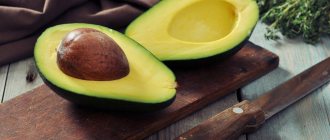The yolk is introduced into the baby's complementary foods in the first year of life. On the one hand, it is a valuable source of nutrients that the baby’s actively growing body needs, on the other hand, the fat-rich yolk is an additional burden on the liver and a fairly strong allergen. Therefore, parents should carefully monitor the child’s reaction and take the necessary measures if there are adverse consequences.
How to introduce the yolk, how to deal with undesirable consequences, at what age can you give your child an egg - there are many questions and you will find answers to them below. Complementary feeding is a responsible matter that affects the well-being, health and mood of a small child. That is why it is important to familiarize yourself with the basics of its introduction in advance.
How is yolk good for babies?
It is recommended to give only quail and chicken eggs to children under one year of age. The yolk of the eggs of these birds contains important elements and vitamins for the child’s development, as well as fats and amino acids necessary for the body.
- Potassium, calcium, phosphorus contribute to the proper formation of the skeletal system, tooth growth, and have a beneficial effect on metabolism.
- Selenium and iodine are necessary for the formation of the endocrine system. Iodine also provides energy to the body and is important for the absorption of certain vitamins.
- Iron and cobalt take an active part in hematopoiesis and prevent anemia.
- Zinc has anti-cancer effects.
- In terms of the amount of vitamin D, chicken eggs are second only to fish oil, an excellent prevention of rickets.
- Cholesterol is important for the formation of the child’s immune and hormonal system.
- Lecithin is involved in brain function and affects speech development.
- Retinol improves hair growth and helps form bone tissue, strengthens the immune system.
- B vitamins increase immunity, have a positive effect on the nervous system, visual organs, and increase regeneration.
- Vitamin A improves vision and affects skin condition.
- Vitamin D is necessary for the absorption of calcium, strengthens muscles and bones.
Factory eggs are just as healthy as poultry eggs. The color of the yolk of domestic eggs may be more saturated, but only due to the more varied diet of the bird.
Eggs for children: how long to cook?
With shorter heat treatment, there is a risk of developing salmonellosis. Cooking for too long spoils the taste and reduces the nutritional value. According to research, cooking for more than 15-20 minutes leads to a reduction in the amount of vitamins and amino acids.
To reduce the risk of infection, it is important to rinse raw eggs thoroughly in warm water before cooking.
Pediatricians allow the inclusion of fried eggs in the menu for children over 7 years old. It is important to pay attention to the degree of freshness. A dish made from old eggs can harm a child's body.
Chicken or quail eggs: which is better?
Nowadays, you can easily buy not only chicken eggs, but also quail eggs. Moreover, the value of the latter, despite their small size, is much higher. They are superior in the amount of nutrients. For example, five quail eggs, which weigh the same as one chicken, contain 4.5 times more iron, 5 times more potassium, and 2.5 times more B vitamins. However, chicken eggs are less caloric than quail eggs, they are lower in various fats and cholesterol. This means that the load on the baby’s liver and developing digestive system is less. In addition, quails lack vitamin D, which is important for baby growth.
Quails are not susceptible to salmonellosis and are not given antibiotics. Quail eggs are less allergenic and almost do not cause diathesis in infants, so many pediatricians recommend starting complementary feeding with them.
It is recommended to alternate chicken and quail eggs, as their composition differs.
Complementary feeding of a child according to Komarovsky from 8 months to one year - meat, vegetable and fruit puree, yolk
All of the following applies to children over 8 months. Until this age, complementary feeding of a child according to Komarovsky involves the gradual introduction of fermented milk products and cereals.
And the baby should approach the next “edible milestone” with the following menu: meals – 4-5 times a day, of which 1 time is kefir and 1 time is porridge, the rest is the usual mother’s milk or an adapted formula.
Now it’s time to try vegetable complementary foods, fruit purees and meat.
Introducing vegetables into complementary foods
As we already said in one of the previous articles, complementary feeding of a child according to Komarovsky cannot be presented in the form of a table that would specifically describe when to introduce meat, fruits, vegetables and other dishes. After all, in fact, the scheme is drawn up by the parents themselves personally for their child (not to be confused with would-be mothers who are in a hurry to introduce complementary feeding from 3 months!).
It is not at all necessary to introduce vegetable complementary foods into the diet of an 8-month-old child. Of course, if the child already has at least one tooth in his mouth, you can start. And if there is not a single tooth (this is rare, but it happens), Komarovsky advises waiting until the “firstborn” appears. Sometimes this dish is included in the diet at 10 months, not earlier.
When introducing vegetables into complementary foods, we begin with tests that will demonstrate how the baby reacts in principle to this new product. To do this, we give the child 30-50 grams of vegetable broth.
On the second day we double the dosage. If there is no negative reaction, you can switch to soup or vegetable puree.
We continue to gradually increase the dose. And as a result, we completely replace one of the breast milk (formula) feedings with vegetable complementary foods.
Recipes for vegetable complementary foods from Komarovsky
Komarovsky recommends starting feeding with root vegetables and herbs with a decoction. And this is how he prepares.
We take carrots, potatoes, cabbage and onions.
Chop everything very finely, pour boiling water (the proportion is approximately 100 ml of water per 50 g of vegetables), close the lid and continue to boil until everything is boiled.
Then we filter the liquid through cheesecloth, boil it again and pour it into a bottle. Ready!
And to make complementary foods with vegetable puree, you also need to cut various vegetables, add a little boiling water and simmer everything.
Since the water will gradually boil away, you need to add new water.
Cooked vegetables (hot) should be rubbed through a sieve, add hot milk and a little salt.
Then beat everything thoroughly and boil.
And then, in the finished vegetable puree soup, it would be nice to add vegetable oil.
Komarovsky recommends feeding vegetable puree in the following proportions: per 100 grams of vegetables (at least 20 grams for potatoes), 25 g of milk and 3 g of vegetable oil.
Subscribe to “Baby Feeding” on !
Complementary meat and fruit puree
Vegetables are given to the child from 2 to 3 weeks (it doesn’t matter - in the form of puree or soup). And then meat is introduced into complementary foods. The tactics are similar to those with the previous group of products.
We start this kind of complementary feeding according to Komarovsky with a test soup, which is cooked in meat broth (preferably chicken), and not in water.
If all is well, you can add pureed meat to the soup. And after a few more days, you can add a fifth of the yolk of a hard-boiled chicken egg to the soup.
Then we gradually increase this dose, but up to a year the baby does not need more than half a yolk.
If meat should be introduced into complementary foods exclusively after vegetables, then fruit dishes are not “tied” to any other products.
Dr. Komarovsky advises starting complementary feeding with them after the toddler’s first tooth comes out. And if this happened before the child was six months old, you need to wait until the 6-month mark.
Moreover, fruit complementary foods do not necessarily mean juices. The liquid very successfully replaces the pulp of a baked apple.
It is no worse to introduce fruit puree into complementary foods. But in any case, such food should first be given as an additional one, after the baby has eaten formula or been fed from the mother’s breast.
The situation will change a little when the child gets a little older: nutrition at 8 months may already imply a gradual abandonment of the breast.
From 10 months to a year
By 10 months, three feedings a day should consist entirely of adult food. We give cottage cheese and kefir once, porridge once, and soup again. Dr. Komarovsky recommends complementary feeding with porridges and soups at this age in a wide variety of ways.
Also, the child should already become familiar with the yolk and vegetable oil, drink 30-50 grams of juice. The main thing is not to feed meat with high fat content.
But you can also add crushed cookies to cottage cheese and kefir. And serve mashed potatoes with mashed meat and milk. And give a baked apple.
You can add bread crumbs to the soup. And just like that, in your hand, a piece of apple or a crust of bread (to chew or suck).
In addition, soup for a 10-month-old toddler can be prepared not only with meat, but also with fish broth.
Thus, adult food (fruit complementary foods, cereals, meat, etc.) becomes the main food by 9-10 months, and mother’s milk and formula become auxiliary.
And yet, if the mother has milk, she needs to feed the baby at least once a day for up to a year. It shouldn’t be longer, there is no biological meaning in this, except perhaps a psychological one.
But good adapted mixtures have such a useful composition that they can be given for up to three years.
prikormrebenka.ru 2017-06-18
(5 3,40 of 5) Loading...
Source: https://prikormrebenka.ru/prikorm-rebenka-po-komarovskomu-s-8-mesyacev-do-goda-myaso-ovoshhnoe-i-fruktovoe-pyure-zheltok/
What are the cooking features: how many minutes to cook a quail and chicken egg?
Only fresh foods are acceptable for feeding a child. It's easy to check if an egg is fresh. Submerge it in water. The fresh one will go to the bottom, and the one that has been lying around for 5 days will float to the surface. The shelf life of chicken is 30 days, quail is 90 days. Be careful! Expired eggs can cause poisoning.
Before boiling an egg, wash it thoroughly under running water and soap, as the shell contains a huge number of microbes, including salmonella. After boiling, cook the first one for 5 minutes, and the second one for 10-12 minutes. After the egg has been boiled, it is advisable to immediately place it in cold water to make it easier to remove the shell. Then carefully separate the yolk, mash it into a paste, adding a little breast milk (or whatever formula the baby is currently being fed with) and mix thoroughly. Milk is added to give the yolk a softer (liquid slurry) consistency. The yolk in this form is easier for the child to swallow. It is not recommended to give boiled “in a bag”, soft-boiled, and even more so raw yolks.
How to choose
Experts say that the beneficial properties of the product do not depend on the shade of the shell. Freshness plays a big role. When purchasing, it is important to pay attention to the release date. Children are not recommended to buy food that is nearing its expiration date.
Eggs with cracked shells pose a health hazard. An infectious agent can penetrate through the damage. They also shouldn't be too clean. If they were washed the day before, the shelf life is significantly reduced.
You should not buy the product in dubious places. It is recommended to avoid purchasing from private sellers.
To check the freshness, the egg can be placed in a container filled with cold water: a good one should sink to the bottom.
At what age should a child be given yolk?
The older generation advises starting to give this product at 2-3 months of age, but this is not true. Firstly, the baby’s stomach is not yet ready for heavy protein foods. Secondly, the yolk consists of more than 20% fat, which puts a strain on the child’s liver.
From how many months can you give yolk to a baby? The time of introduction of any complementary foods is determined by several indicators. So, if the baby is on breastfeeding, then it is better to give him the yolk no earlier than 9 months. For children on IV, this product is administered from 7-8 months. But protein can be given only after a year.
It is necessary to take into account the individual developmental characteristics of the child, who may flatly refuse new food. You shouldn’t insist; it’s better to postpone getting to know the new product for a month or two.
Also, if the baby is prone to allergies, then in this case it is advisable to introduce complementary foods from eggs later. Caution should be exercised when introducing egg products to children whose parents are egg intolerant or have asthma. A pediatrician who has been monitoring the child since birth will tell you when to introduce an egg into complementary foods.
Protein in complementary foods for children
At first, the eggs should be given on the tip of a spoon.
Often, when interested in the topic of when to give chicken eggs to children, parents mean a whole egg. But in the case of baby food, not everything is simple. Considering the different composition of yolk and white, it is recommended to offer chicken white no earlier than 10 months, starting with the minimum dose and gradually increasing to half and then a whole egg. This is due to the fact that egg white is a strong allergen, and the body of a small child is not always able to cope with it.
By the age of one year, the baby is already stronger, the risk of allergies decreases. However, it is better for parents of children prone to allergic reactions to refrain from introducing chicken protein into complementary foods for a longer period.
Administration algorithm - norms by age
When introducing yolk into complementary foods, you do not need to give it daily; before giving it a second time, take a break of 2-3 days. Then the breaks are shortened, and when the child adapts to this product, the egg can be given every other day.
For the first time, you can give your baby just a little yolk, just try it. Each time the amount of yolk offered to the child increases. After a week, the baby can already eat 1/4 of the yolk per day. For clarity, we can create a table, since age standards differ for breastfed and bottle-fed children.
Contraindications
Like all products, egg yolk has contraindications for use as complementary foods. Discard the product if your child has problems:
- overweight or prone to obesity - the yolk is high in calories and saturated fat;
- in its raw form it is difficult to digest, which can cause infectious diseases of the gastrointestinal tract;
- if you are predisposed to allergies, the yolk is a strong irritant;
- for pathologies of the biliary tract, liver diseases.
How to feed: when and how to give the yolk?
There are several simple rules for how to introduce an egg:
- Before introducing any new food, the child must be completely healthy. High temperature, allergic rashes, abnormal bowel movements are contraindications for the new product. Introducing yolk into complementary foods can only worsen the situation.
- How to give yolk to a child? The yolk is introduced to children after introducing them to cereals, vegetable and fruit purees. It goes well with mashed potatoes. If the baby refuses the egg in its pure form, then it is advisable to mix it with already familiar food, including breast milk. And thereby add variety to the diet. Salt is not allowed for up to a year. After introducing protein into the diet, you can prepare steamed cheesecakes and omelettes, as well as add them to soups and main courses.
- How often should I give the yolk? 2-3 times a week. Do not forget about the high calorie content of this product and the significant load on the gastrointestinal tract. If your baby has problems with bowel movements, it is better to give it no more than once a week.
- When can you give your baby an egg? It is better to offer the yolk for the first time in the morning, before the first feeding, so by the end of the day the reaction to the introduction of a new product will be clear. It is worth considering that if meat or fish is supposed to be given on this day, then the egg product must be given at least 4 hours in advance.
When to give an egg to a baby
When should you give an egg to a baby so as not to deprive its growing body of essential nutrients and at the same time not harm its health?
Pediatricians recommend trying to introduce only the yolks of boiled chicken eggs into the complementary feeding of a baby in the first year of life, since the use of protein for children of this age category is prohibited due to its strong allergenic ability. This can be done starting from seven months of age and with a very small portion. In order to feed the baby the yolk of an egg for the first time, you should separate its small part, about a sixteenth, and dilute it to a puree with the main food, be it breast milk or baby formula. Boiled water will do. A portion of half a teaspoon can be given to the baby and carefully monitor the subsequent reaction. If manifestations of allergies in the form of redness of the skin, diarrhea or swelling and rash do not occur within 24 hours, then the product is harmless to it.
Within a week, the amount of serving can be gradually increased to half the yolk and added in this quantity to the child’s diet until he reaches one year of age.
Allergy to yolk and how to deal with it
Please note that eggs are a product that can cause allergies. Most often, the reaction occurs to the white, so it is better to start with the yolk.
If, after giving the yolk, the baby has even the slightest allergic reaction, you should postpone introducing it to it for at least a month. This is one of the main rules for introducing any complementary foods up to a year, including yolk. Your doctor will tell you how to give an egg to a one-year-old child.
As a rule, whether a given product is suitable or not becomes visible on the first or second day, but sometimes the first signs appear only after a few days. This may include peeling and redness of the skin, swelling of the face, and abnormal bowel movements. If at least one of the listed signs is detected, you need to temporarily abandon the new complementary foods. When repeated administration, you should also carefully monitor the body's reaction. If the allergy does not manifest itself, you can increase the dose in accordance with age indicators.
Thus, the yolk is one of the nutritious and healthy foods in the diet of young children. It is important to correctly introduce it into the diet, taking into account the age and individual characteristics of the baby. Find out in advance how to give eggs to your baby. Do not forget that an egg is a foreign protein for the body, which is a strong allergen and can also have an adverse effect on the baby’s digestive system. Watch your child carefully, do not rush to give too large a portion, do not force or insist, then egg dishes will eventually become an integral and favorite part of your child’s menu.
Benefits and harms
Eggs provide the child’s body with useful substances necessary for full development. Their positive properties are as follows:
- A large list of amino acids contained allows the body to maintain proper growth of all tissues.
- The yolks contain a fat-soluble form of vitamins that all baby systems need.
- Yolks supply children's bodies with minerals necessary to maintain healthy skin, immune, urinary and nervous systems.
- The small amount of calories contained in the product allows it to be included in the diet of an overweight child, regardless of the time of day.
A couple of decades ago, many considered eggs to be harmful due to the presence of large amounts of cholesterol in them. It was believed that this substance leads to the development of vascular and heart diseases. Numerous studies have proven that the product does not harm the body and helps reduce triglyceride levels.
The only drawback is its high allergenicity. It is characteristic mainly of chicken eggs.
More often, intolerance occurs to protein. Quails are better absorbed by the child's body and are less likely to cause signs of intolerance.
Benefits of eggshells
In folk medicine, there are recipes that use eggshells. But since the shell itself contains a lot of calcium, which a growing body needs, in cases where the baby suffers from food allergies and cannot eat eggs, doctors recommend giving him shells as food in order to saturate the body with calcium. The shell is first prepared to the desired state.
Eggshells are no less beneficial for children than the contents of the egg.
For this:
- Take homemade (not store-bought) eggs with white shells, which you then thoroughly wash with a solution of baby soap.
- Take the contents out of the shell and remove the inner film.
- Leave the shells for a couple of hours to dry.
- Grind the shells to a powder state. To do this, use a regular mortar and pestle, no blenders or coffee grinders.
- Pour half a tablespoon of powder with the juice of squeezed half a lemon, then mix. The chemical reaction will form foam, remove it without ceasing to stir the solution.
- Let the composition sit for half a day in a dark room at room temperature.
As a result, you will receive a hypoallergenic food supplement, which can either be added to other dishes for children, or used as a separate, completely approved by medicine, medicinal composition. The drug must be stored in the refrigerator.
Take it once a day in portions, the volume of which depends on how many months or years old the child is:
- up to six months – one gram;
- from 6 months to a year – two grams;
- from one to two years – 4 grams;
- up to 7 years – half a teaspoon;
- up to 14 years - one tablespoon.











